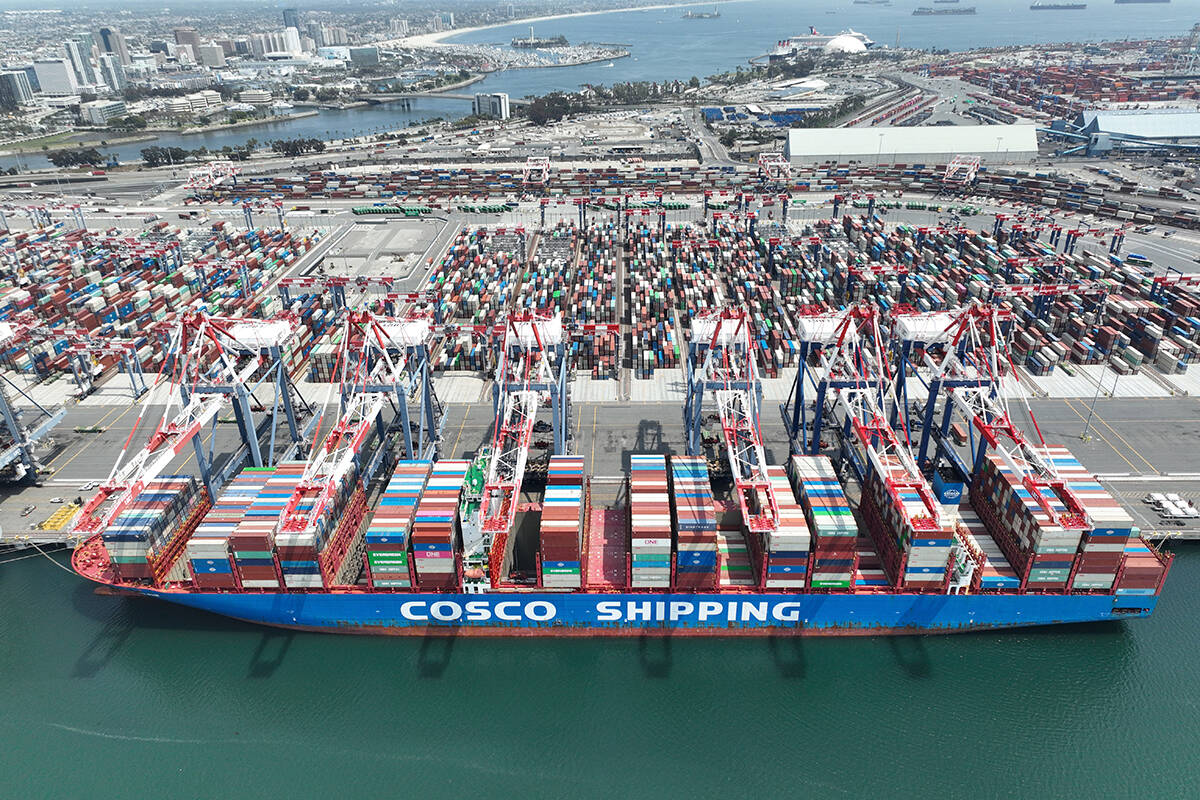Excess supply leads to waste | The country’s storage capacity is already maxed out and another bumper crop is expected
NEW DELHI/SINGAPORE (Reuters) — India is holding firm to a price of $300 a tonne for its wheat despite falling global prices.
It sets the scene once again for piles of rotting grain, even though it needs to feed its half a billion poor.
Plans by the world’s second-largest wheat producer to export record volumes are now under threat after the central government stuck to the price for tenders when it met private exporters earlier this month.
Although India is already making a loss at $300, its price is not low enough to compete against higher quality Australian and U.S. wheat.
Read Also

U.S. softens fees on Chinese shipping
The U.S. starts charging new fees on Chinese ships on Oct. 14. What are the ramifications for their ag exports?
India recently approved exports of five million tonnes direct to private traders, on top of 4.5 million tonnes already approved for tenders by state-run companies.
“The very idea of exporting wheat to liquidate stocks will get defeated, as exports will slow down if the government maintains its stand of not selling below $300 a tonne,” said Tejinder Narang, an adviser at leading New Delhi-based exporter Emmsons International.
Last year, pictures in newspapers of rotting grain stocks caused embarrassment to the government.
This year, grain stocks have already surpassed the country’s secure storage capacity of 47 million tonnes, risking damage from pests and weather. Another bumper harvest of 92 million tonnes is on the way.
Global wheat prices have fallen more than 10 percent since February, and now India’s product cannot compete with better quality Australian and U.S. grain. New crop Black Sea supplies are already selling more cheaply.
Farm minister Sharad Pawar and food minister K.V. Thomas, who have sparred over export policy in the past, now agree that exports should not fall below prices being offered to domestic biscuit makers and flour mills.
That level of $300 a tonne free on board is below the government’s cost of $325 a tonne, taking into account prices to domestic farmers, local levies, transport to warehouses and storage.
The floor price has also been fixed for private exporters who will directly buy the extra five million tonnes just offered. Three million tonnes have been sold under a tender mechanism set up to sell 4.5 million tonnes through state-run companies.
The highest bids received by state-run firms in their latest wheat export tenders were $301 and $305 a tonne f.o.b.
Bids around $305 a tonne f.o.b. for Indian wheat are from traders who have already sold at higher levels and need to cover those deals, said a Singapore-based trader.
Australian wheat, which is of superior quality, is only $10 a tonne more expensive than Indian wheat, down from a gap of $25 to $30 a few months ago, traders said.
As well, buyers have already started placing orders for Black Sea wheat, offered around $300 a tonne, including cost, insurance and freight, into Southeast Asia, versus Indian prices of $315 to $320 a tonne for July shipment.
Private traders such as Cargill, Louis Dreyfus and Glencore will not buy at these levels, eyeing harvests to come from the United States and Ukraine.
“The way prices are going, I think the government will have to come up with a solution if it wants to maintain the current level of close to 500,000 tonnes a month of exports,” said another Singapore-based trader.
















